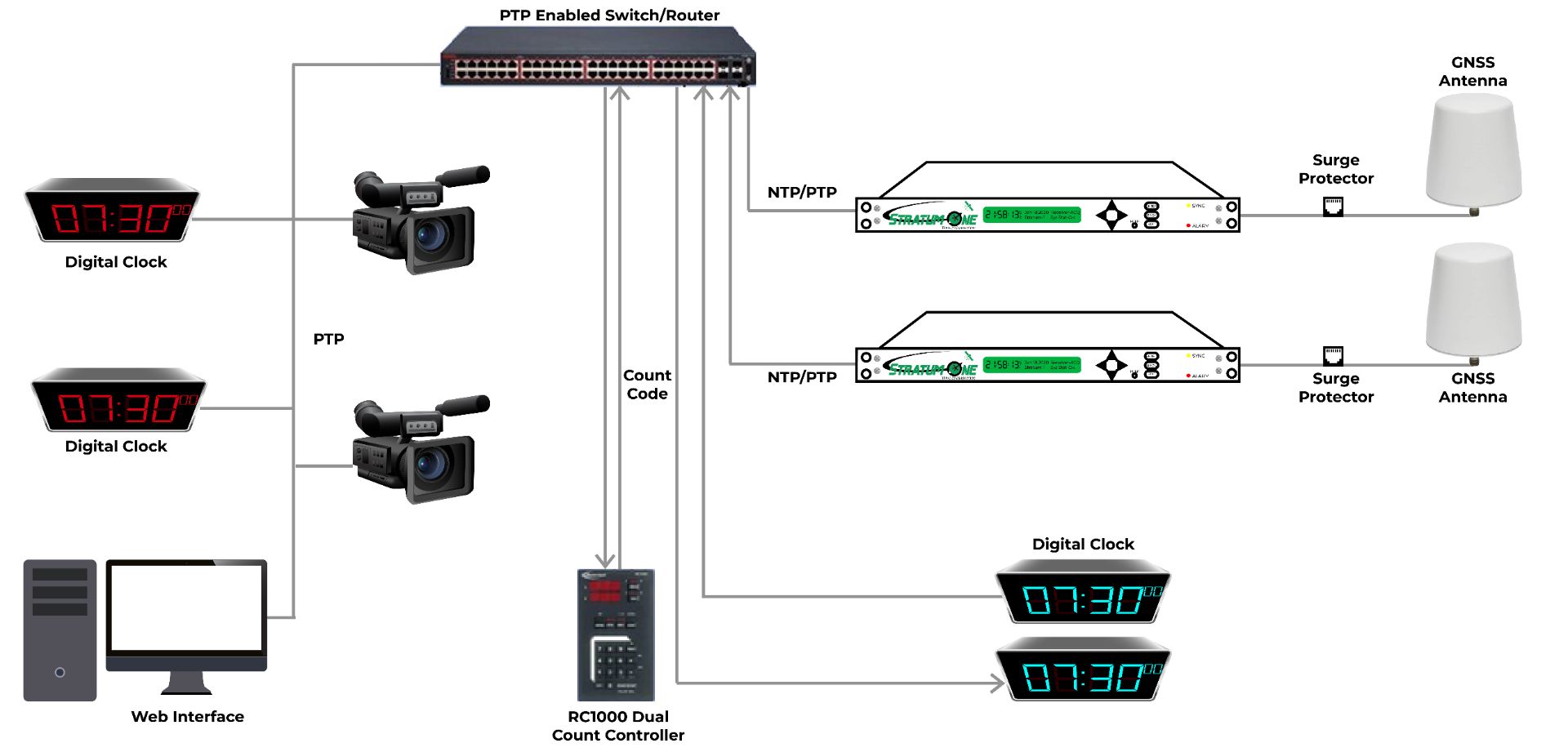Time Synchronization of all Devices and Systems Involved in the Studio
Digital video broadcasting (DVB-T) uses Single Frequency Networks (SFN) with advanced modulation techniques to optimize spectrum and bandwidth. SFN transmitters all operate on the same frequency, so they require precision synchronization to broadcast multiple channels in mega frames with minimum guard intervals. The use of the guard interval is required for SFN and provides for efficient utilization of the radio spectrum. This allows for a higher number of radio and TV programs in comparison to traditional transmission techniques. The signals from each transmitter in the SFN need to be accurately time-aligned, which is usually done with GPS timing at each transmission point. A GPS-based time and frequency standard, such as the Meridian II, provides 10 MHz and 1 PPS signals to enable this synchronous transmission from SFN transmitters with a high quality-of-service.

PTP Broadcast Control Room
The use of GPS at each transmission point adds to the cost of deploying DVB-T or DAB networks. The Precision Time Protocol (PTP/IEEE-1588) is an IP network protocol that distributes a clock signal with the quality required for DVB-T or DAB. This lowers synchronization cost by allowing for a minimum of GPS receivers in conjunction with PTP-based devices. In addition to sourcing 10 MHz and 1PPS signals, the Time & Frequency Reference can be used as a PTP Grandmaster.
• We offer extensive solutions for time & Frequency synchronization in radio, television and video studios.
• Our time servers are synchronized to UTC world time using the precise time signal from GPS satellites. They make this exact time available to the network on participating devices and systems.
• We use industry standards such as PTP, NTP, SMPTE and IRIG-B to transport the time information.
• All devices can be controlled and adjusted via a secure network access.
